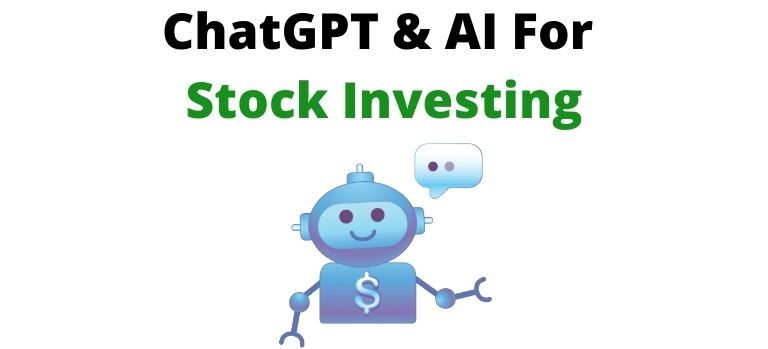20 Recommended Suggestions For Deciding On Ai Stock Trading Websites
Top 10 Tips To Assess The Integration And Compatibility Of Ai-Based Stock Forecasting And Trading PlatformsIntegration and compatibility are critical elements when it comes to the evaluation of AI platform for stock prediction and analysis. A platform which seamlessly integrates with the existing tools, systems and workflows of your company can increase productivity and efficiency. Here are the top 10 suggestions for evaluating the compatibility and integration between these platforms.
1. Check Brokerage Integration
Supported Brokers: Make sure the platform you choose to use is compatible with your preferred broker account or trading platform.
Trade Execution: Verify whether the platform permits direct execution of trades by the broker integrated.
Account Synchronization: Make sure that your platform is able to sync live-time balances on your account as well positions and transaction history.
2. Assessment of API availability
API access: Make sure the platform has an API (Application Programming Interface) that allows developers to develop custom tools or automate workflows.
API documentation: Verify that the documentation for the API provides clear examples of examples of use.
Rate limits: Determine whether there are acceptable rates for the API and if it is able to accommodate the anticipated volume of usage.
3. Examine the Third-Party Tool Integration
Popular tools: Check if the platform can be integrated with other tools such as Excel or Google Sheets.
Export and import of data. Check that your platform can import or export data from or to any other tool.
Extensions/Plugins: Make sure your platform supports extensions and plugins that can provide more functionality.
4. Test Compatibility Operating Systems
Desktop compatibility - Make sure that the platform you select can be used with Windows, macOS and Linux.
Mobile compatibility. Verify if you are able to download the app on iOS or Android.
Access via the internet (for additional flexibility) Verify that the platform is accessible using a webbrowser.
5. Assessment of the Data Integration Capabilities
Data sources: Make sure the platform integrates with various data sources (e.g. market data providers, news feeds sentiment on social media).
Real-time feeds for data: Verify that the platform allows for real-time integration of data to provide up-to date analysis.
Historical data import: Determine whether the platform supports importing historical data for backtesting or for analysis.
6. Evaluate cloud and on-premise compatible
Cloud-based Platforms: The platform must be available anywhere there is an internet connection.
On-premises deployment: Find out if your platform is compatible with on-premises deployment.
Hybrid models: Determine whether the platform is cloud-based and on premise capabilities.
7. Check for Cross Platform Synchronization
Device synchronization. Make sure that settings and data are synchronized across all platforms (desktops tablets and mobiles).
Real-time updates: See if your changes made to one device instantly show up on the other devices.
Offline access: Verify that your application has limited functionality and data access while offline.
8. Examine the compatibility of trading Strategies
Algorithmic or automated trading: Make sure that the platform you use for trading supports these strategies.
Custom indicators - See if the platform permits the use of customized technical indicators and scripts.
Backtesting strategies: Find out whether the platform is capable of testing trading strategies back using historical information.
9. Assess Security and Compliance
Data encryption: Ensure the platform is using encryption to protect data in transit and in rest.
Authentication : Verify that the platform supports secure authentication methods (e.g. 2-factor authentication).
Check for regulatory compliance: Make sure that the platform is compliant with the relevant laws (e.g. GDPR, FINRA or SEC).
10. Scalability of Tests, Performance and Efficiency
Scalability: Ensure the platform is able to handle the increasing amount of data and users as your requirements increase.
Performance under load: Check whether the platform performs as expected under high-volatility conditions.
Utilization of resources: Determine if the platform efficiently uses the system resources (CPU memory, bandwidth, CPU).
Bonus Tips
User feedback: Check out user testimonials and reviews to determine the platform's capability to integrate.
Free trial: You can avail a demo or a no-cost trial to test the compatibility of the platform to your current workflows and tools.
Customer Support: The platform should provide solid support when it comes to integration problems.
If you follow these guidelines, you can effectively assess the integration and compatibility of AI stock predicting/analyzing trading platforms in order to ensure they are compatible with your existing systems, and improve your trading efficiency. Check out the best ai trading bot advice for website advice including best ai for trading, ai trading tools, best ai stock, ai stock, chatgpt copyright, best stock advisor, ai trader, ai for trading, stock ai, ai stocks and more.

Top 10 Tips For Evaluating The Regulatory Conformity Of Ai Stock Predicting/Analyzing Trading Platforms
The regulatory compliance is a crucial aspect to consider when considering AI stock predicting/analyzing trading platforms. Compliance ensures a platform's operation within legal guidelines. Data of users is secured and financial regulations are complied with and reduces the risk of legal concerns. Here are 10 top suggestions for evaluating the compliance with regulations of these platforms:
1. Verify the Licensing & Registration
The regulatory bodies should ensure that your platform is registered with and licensed by relevant financial regulatory authorities (e.g., SEC in the U.S., FCA in the UK, ASIC in Australia).
Verify the broker collaboration If your platform is integrated with brokers or brokers, be sure they are also licensed and regulated.
Public records: Go to the website of the regulator to verify the status of registration and past violations.
2. Compliance with the Data Privacy Evaluation
GDPR: If your business is located within or serving users from the EU, ensure your platform is compliant with the General Data Protection Regulation (GDPR).
CCPA for users living in California ensure compliance with the California Consumer Privacy Act (CCPA).
Data handling policies: Go through the policy of the platform's data privacy to make sure that it outlines exactly the way that user data is stored, shared and collected.
3. Evaluation of Anti-Money-Laundering Measures
AML policies: Make sure the platform is able to abide by AML policies that are in place to stop and identify cash laundering.
KYC Procedures: Determine if the platform has procedures in place to verify the identity of users.
Monitoring transactions: Find out if the platform can monitor transactions and reporting suspicious activities to the relevant authorities.
4. Verify compliance to Trading Regulations
Market manipulation: Make sure the platform is equipped with measures to prevent market manipulation, for example, spoofing or washing trading.
Order types: Ensure that the platform adheres to rules regarding order types.
Best execution: Make sure to see if the platform is adhering to the best execution method which guarantees that trades are executed at the lowest possible price.
5. Cybersecurity compliance assessment
Data encryption - Make sure that the platform is using encryption to secure data either in transit or when it is at in rest.
Incident response. Verify that there is a clearly defined incident response plan on the platform for cyberattacks as well as data breaches.
Check for any certifications.
6. Examine Transparency and Transparency
Fee disclosure - Make sure all fees are clearly revealed, including extra charges or hidden costs.
Risk disclosure: Verify if the platform offers clear risk disclosures, especially when it comes to high-risk trading or leveraged strategies.
Performance reporting: Check if the AI platform's models are clear and correctly reported.
7. Make sure that you are in compliance with International Regulations
Transparency in trading across borders: If you are trading internationally, make sure that the platform you are using is in compliance with all applicable regulations.
Tax reporting: Check if a platform has tools or reports to allow users to adhere to tax laws.
Respect for international sanctions: Be sure your platform is in strict compliance with these and doesn't allow trading between countries or entities that are banned.
8. Assess Audit Trails and Record-Keeping
Transaction records: Make sure your platform has detailed records of every transaction for regulatory and auditing purposes.
User activity logs: Verify whether the platform records the user's activity, such as logins, trades, and changes to account settings.
Audit-readiness: Find out if the platform will be able to produce all required documents and logs to support an audit by a regulatory agency.
9. Verify compliance with AI-specific regulations.
Algorithmic trading regulations: If the platform allows algorithmic trading, make sure it complies with regulations like MiFID II in Europe or Reg SCI in the U.S.
Fairness and impartiality: Verify whether the platform's AI models are monitored and controlled to ensure that they are not biased.
Explainability: Certain regulations require that AI platforms explain AI-driven decisions or predictions.
Examine the User's Feedback and Regulatory Histories
User feedback: Review user reviews to assess the platform’s reputation for compliance with the law.
Check the history of regulatory compliance to determine whether there have been any violations to the rules of regulation that were committed, as well as fines and penalties.
Third-party inspections: Check if the platform is subject periodic third-party inspections conducted by an independent party in order to verify compliance.
Bonus Tips
Consultations with a lawyer: You may consider consulting an attorney to determine if the platform is in compliance with relevant regulations.
Free trial period: You may make use of a demo or a no-cost trial to try out the compliance features of the platform and its documentation.
Support for customers: Make sure the platform has support available to answer questions or concerns that concern compliance.
These tips will help you to assess the compliance with regulations for an AI stock-predicting/analyzing trading platform. You'll be able to choose a system that is in compliance with the legal frameworks, while also protecting your rights. Compliance not only minimizes legal risks but also builds confidence and trust in the platform's services. Read the most popular trader ai for blog tips including incite ai, best ai trading software, ai chart analysis, incite ai, ai stock picker, chart ai for trading, incite, getstocks ai, ai trader, trade ai and more.
